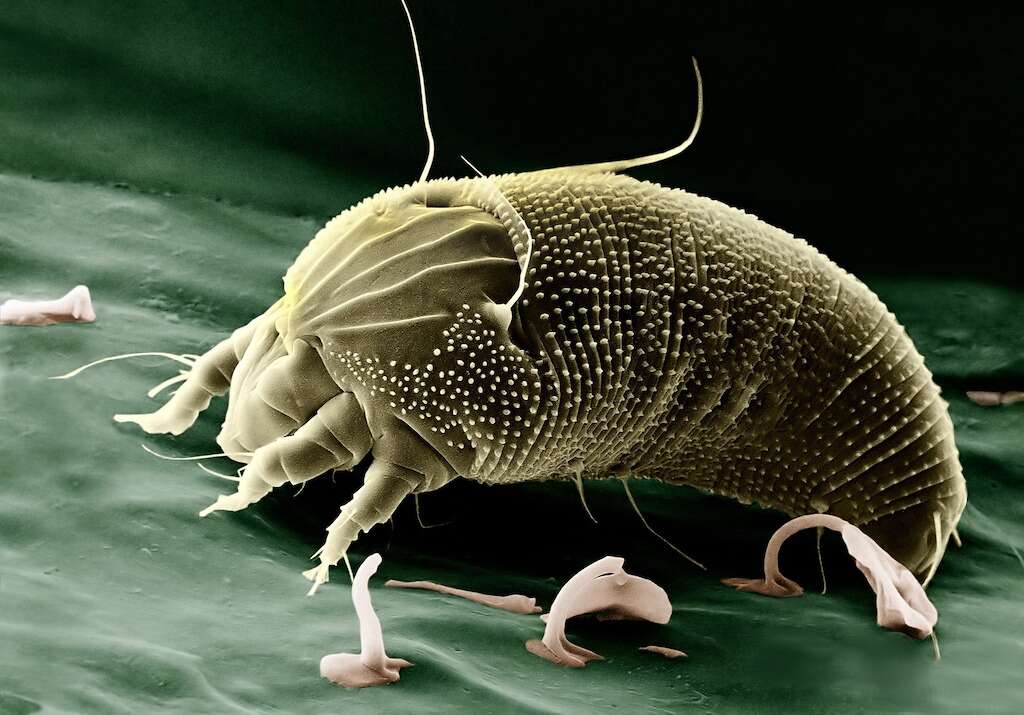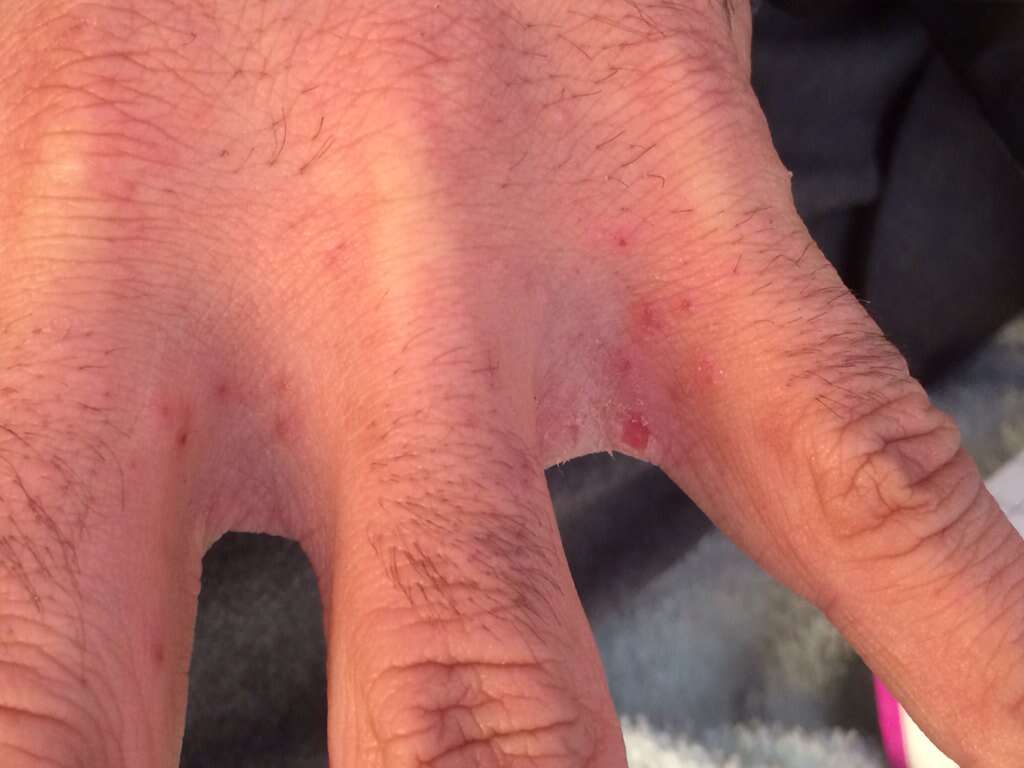Scabies Causes, Treatments & More
 Article Sources
Article Sources
- 1. 'Scabies.' Michigan Medicine, University of Michigan, https://www.uofmhealth.org/health-library/hw171811
- 2. 'Scabies: Overview.' Mayo Clinic, https://www.mayoclinic.org/diseases-conditions/scabies/symptoms-causes/syc-20377378
- 3. 'Scabies.' Kids Health from Nemours, https://kidshealth.org/en/parents/scabies.html
- 4. 'Parasites-Scabies.' Centers for Disease Control, https://www.cdc.gov/parasites/scabies/gen/info/faqs.html
- 5. 'Scabies.' World Health Organization, https://www.who.int/news-room/fact-sheets/detail/scabies.
Scabies is an itchy condition caused by a mite that burrows under the skin. The mite that causes scabies is called Sarcoptes scabiei. Individuals who get scabies experience extreme itching in affected areas. The itching is a result of an allergic reaction to the mites. The itching from scabies tends to be worse at night.
As long as the condition is left untreated, the mites will continue to reproduce under the skin. Scratching provides some immediate relief but can leave the skin irritated and broken, causing sores. Scabies spreads easily among individuals in settings where there is prolonged close contact.
1. Who Is Likely to Get Scabies?
Socioeconomic status, race, gender and background do not determine who gets scabies. Scabies affects people all over the world, but those who live in crowded conditions can be more susceptible. Scabies most often impacts persons in situations where there is constant close contact because it's very contagious.
Child care centers, college dorms, correctional facilities, nursing homes and similar congregate settings where people live or spend much of their time in close quarters are places where it's easy for scabies to spread. It's not unusual to hear of scabies outbreaks in childcare centers.
2. How Does Scabies Spread?
Scabies spreads when individuals have skin-to-skin contact with an infected person. Holding hands, sleeping in the same bed and sitting in crowded areas for lengthy periods are all situations that promote scabies spread.
It can also be spread by sexual contact. When a household member contracts scabies, others in the home become infested. Sharing towels, clothing, linens and stuffed animals can facilitate scabies transmission, especially when a member of a household or facility has crusted scabies.

3. Symptoms of Scabies
The symptoms of scabies include intense itching that becomes worse at night. Visible burrow tracks created by the scabies mite along with rash-like bumps and blisters appear on the skin.
When an individual has crusted scabies, also called Norwegian scabies, large numbers of mites and eggs cause crusted areas to form on the skin. People with crusted scabies can spread the infestation to others easily through direct skin contact or indirectly through clothing and textile items.
4. How Long Does it Take for Symptoms to Appear?
The onset of symptoms depends on whether a person has been infected with scabies in the past. After the female mite burrows into the skin and lays eggs, the eggs hatch within 1-2 weeks and develop into full adults within four weeks.
Within 4-6 weeks the mite proteins cause a severe allergic reaction that causes the intense itching people with scabies experience. When an individual has had a previous scabies infection, symptoms may appear within 1-4 days.

5. What Part of the Body Does Scabies Affect?
Scabies may affect several areas of the body. In adults and older children, the blisters, bumps and burrows from scabies may be present in the skin folds of the wrists, elbows or knees and on the webbing between the fingers.
Other areas of infestation may include the breast, penis and shoulder blades. In infants and young children, it's not unusual to also observe scabies on the face, head, neck, palms and soles of the feet.
6. How Is Scabies Diagnosed?
A health care provider may be able to diagnose scabies based on the characteristic skin burrows, blisters and bumps.
However, the recommended practice is to collect a sample of the scabies mite, eggs and feces from the affected area using a needle or by scraping the matter from the skin and then examining the samples under a microscope. Even if the health care provider cannot find evidence of the mites, an individual can still be infested.

7. How Is Scabies Treated?
A healthcare provider must prescribe treatment for scabies. Over-the-counter antihistamines may help manage allergic reaction and calamine lotion may help relieve skin irritation. Scabicides are prescription treatments in the form of creams or lotions.
Scabicides should be applied to the entire body and left for a specified amount of time (8-12 hours before washing off) to kill scabies and eggs. Users should follow the treatment instructions carefully. Sexual partners or others who have had prolonged close contact with a person with scabies should also get treatment.
8. How Long Does Treatment Take?
People treated with scabicides can expect relief from intense itching within 2-4 weeks. If the problem does not resolve within that time or new skin burrows or irritation appear, additional treatment may be necessary.
It's also important that persons receiving the treatment follow recommendations to ensure that the scabicide can work as intended. If the initial treatment does not address the problem, the health care provider may need to prescribe another round of treatment.

9. Can Pets Spread Scabies?
There is a species of scabies that affects animals, but animals do not spread human scabies. The scabies mite that affects animals causes a condition called mange.
The mite that causes mange can get under human skin and cause some irritation, but since it cannot reproduce in humans it dies and causes no further damage. However, it's important to get treatment for a pet that is infested with mange-causing scabies.
10. How Can I Prevent Scabies?
Anyone who suspects they might have scabies should contact their health care provider for an evaluation. Scabies mites need human skin to survive, or they die after 2-3 days.
To prevent reinfestation, wash textiles in hot water and dry them using the hottest dryer setting. Dry cleaning also works. Items that cannot be washed or dry-cleaned should not touch the body for at least three days. Vacuum every room in the house. Seal items like stuffed toys in plastic bags for at least three days.










